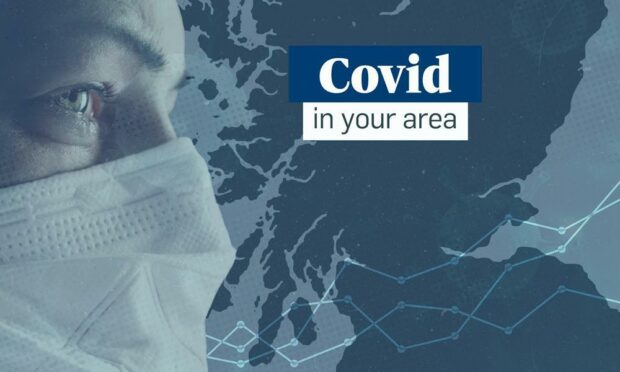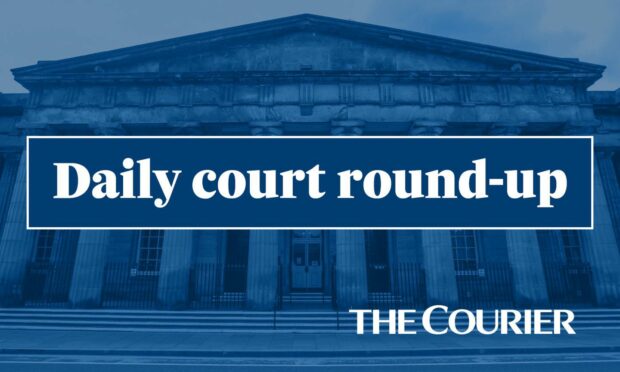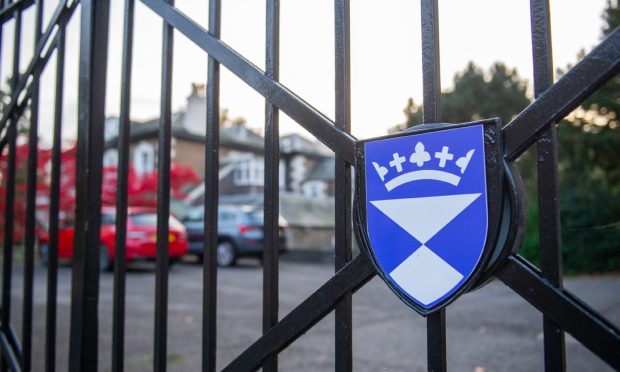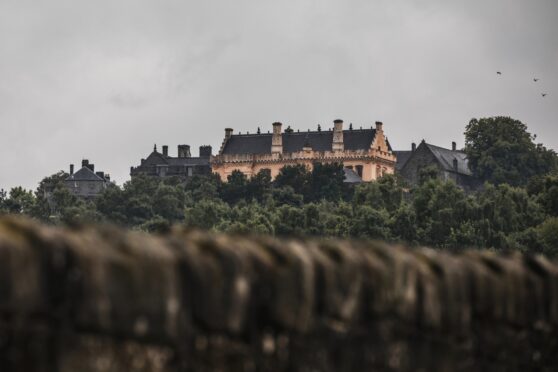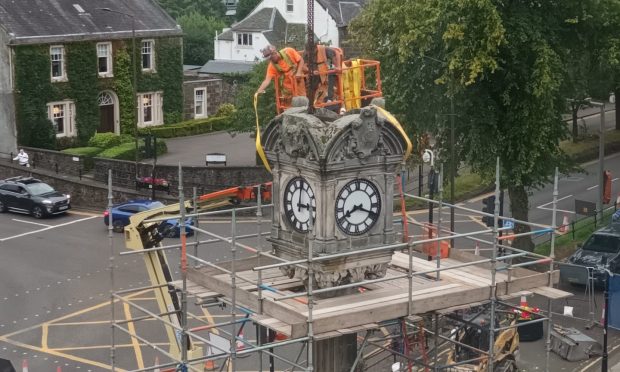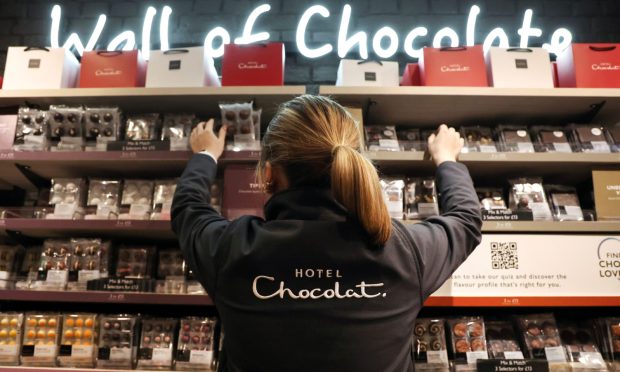Changes to testing policy came into effect on May 1 as Scotland transitions into a new ‘endemic’ phase of Covid surveillance. We’ve taken a look at the rate of Covid cases in Dundee, Angus, Perth and Kinross and Fife.
Things continue to look positive across the country as daily Covid hospitalisations, deaths and cases fall.
Yesterday, May 4, the average daily number of Covid cases over seven days in Scotland fell below 2,000 for the first time since August of last year.
The transition plan seeks to move Scotland away from the emergency response phase of the pandemic to “living with endemic Covid-19”.
As a result, many Covid testing sites have now been closed and the usefulness of daily reports is therefore limited.
From May 9, PHS will release Covid updates twice a week, and move to weekly updates from June.
Case rates across Tayside and Fife were low this week compared to recent months, with all neighbourhoods recording seven-day case rates below 600 per 100,000 population.
Reduction in case rates, which do reflect a genuine fall, may also reflect reduced uptake in testing and going forward may be further affected by closures of testing centres.
As a result, we will no longer be publishing weekly updates on neighbourhood level case rates, unless circumstances change.
Find Covid case rates in your area
Our interactive maps below show the case rate by intermediate zone for Dundee, Angus, Perth and Kinross and Fife. This data shows Covid cases only, you can track data on Covid deaths in Scotland here.
Below includes details for case rates accurate as of May 2, which was the latest information at the time of writing, as this data is subject to a three-day lag in being uploaded by Public Health Scotland.
Each intermediate zone (IZ), represents an area, quite often a neighbourhood, within each local authority.
Hovering over each area will give additional information including the population of each neighbourhood, how many positive cases have been recorded there in the past seven days, and the seven-day case rate per 100,000 population – a measure which is used to compare areas with different populations against each other to accurately track the spread of the virus.
We have compared case rates to previous weeks to provide context about whether cases are rising or falling in your area. This data shows Covid cases only, you can track data on Covid deaths in Scotland here.
What are the rates of Covid cases in Dundee?
The below chart shows the rate of Dundee Covid cases for each neighbourhood in the city.
This week the three neighbourhoods in the city with the highest case rates were West Pitkerro, Broughty Ferry West, and Charleston.
West Pitkerro had a case rate of 261 per 100,000 population, and 17 positive cases in the previous seven day period out of a population of 6,520.
Broughty Ferry West had a case rate of 214 per 100,000 population and 11 Covid-19 cases out of 5,146 people living there, while Charleston had a case rate of 212 per 100,000 population with 9 cases out of 4,250 residents.
Of the 31 neighbourhoods in Dundee, 29 saw a decrease in case rates compared to last week (94%) while the other two saw no change.
Last week, the top three neighbourhoods were Balgay, Stobswell and Menzieshill.
What are the Covid case rates like in Angus?
The below chart shows the rate of Angus Covid cases for each neighbourhood in the region.
This week the neighbourhoods with the highest case rates in Angus were Carnoustie West, Kirriemuir Landward, and Forfar Central.
Carnoustie West had a case rate of 395 per 100,000 population, and 21 positive cases out of a population of 5,317 in the past seven day period.
Meanwhile, Kirriemuir Landward had a case rate of 319 per 100,000 population and 9 positive cases out of 2,825 people. Forfar Central recorded a case rate of 317 with 15 positive cases out of its 4,739 residents.
Of the 26 neighbourhoods in the area, 22 saw a decrease in case rates compared to last week (85%) while four increased (15%).
Last week, the top three neighbourhoods were Forfar Central, Carnoustie West and Arbroath Keptie.
What are the rates of Covid cases in Perth and Kinross?
The below chart shows the rate of Perth and Kinross Covid cases for each neighbourhood.
This week the neighbourhoods with the highest case rates in Perth and Kinross were Blairgowrie West; Invergowrie, Longforgan and Abernyte; and Burghmuir and Oakbank.
Blairgowrie West had a case rate of 529 per 100,000 population, recording 30 positive cases out of a population of 5,676.
Invergowrie, Longforgan and Abernyte had a case rate of 375 per 100,000 population, and recorded 14 cases out of the 3,734 people living there, while Burghmuir and Oakbank had a case rate of 359 per 100,000 population and 15 Covid-19 cases out of 4,176 residents.
Of the 35 neighbourhoods in Perth and Kinross, 31 saw a decrease in case rates compared to last week (89%), while three increased (9%).
Last week, the top three neighbourhoods were Burghmuir and Oakbank; Luncarty and Dunkeld; and Blairgowrie East (Rattray).
What are the rates of Covid cases in Fife?
The below chart shows the rate of Covid cases for each neighbourhood in Fife.
This week the neighbourhoods with the highest case rates were Falkland and Freuchie; Cardenden; and Lochgelly West and Lumphinnans.
Falkland and Freuchie had a case rate of 593 per 100,000 population and 15 positive cases out of a population of 2,531.
Meanwhile, Cardenden had a case rate of 440 per 100,000 population with 28 Covid-19 cases out of 6,370 residents. Lochgelly West and Lumphinnans had a case rate of 412 per 100,000 population and 13 positive cases among the 3,155 people living there.
Of the 104 neighbourhoods in Fife, 89 decreased in case rate compared to last week (86%) while 10 increased (10%).
Last week, the top three neighbourhoods were Kirkcaldy Central, Newburgh and Kirkcaldy Templehall West.
Comparing Tayside and Fife
The below chart shows the seven day case rate in each local authority across Tayside and Fife since March 2020.
How do Tayside and Fife Covid cases compare to the rest of Scotland?
The below chart shows the top 10 neighbourhoods in Scotland with the highest case rate per 100,000 population.
Falkland and Freuchie in Fife recorded the seventh highest case rate in Scotland this week, with 593 cases per 100,000 population.
